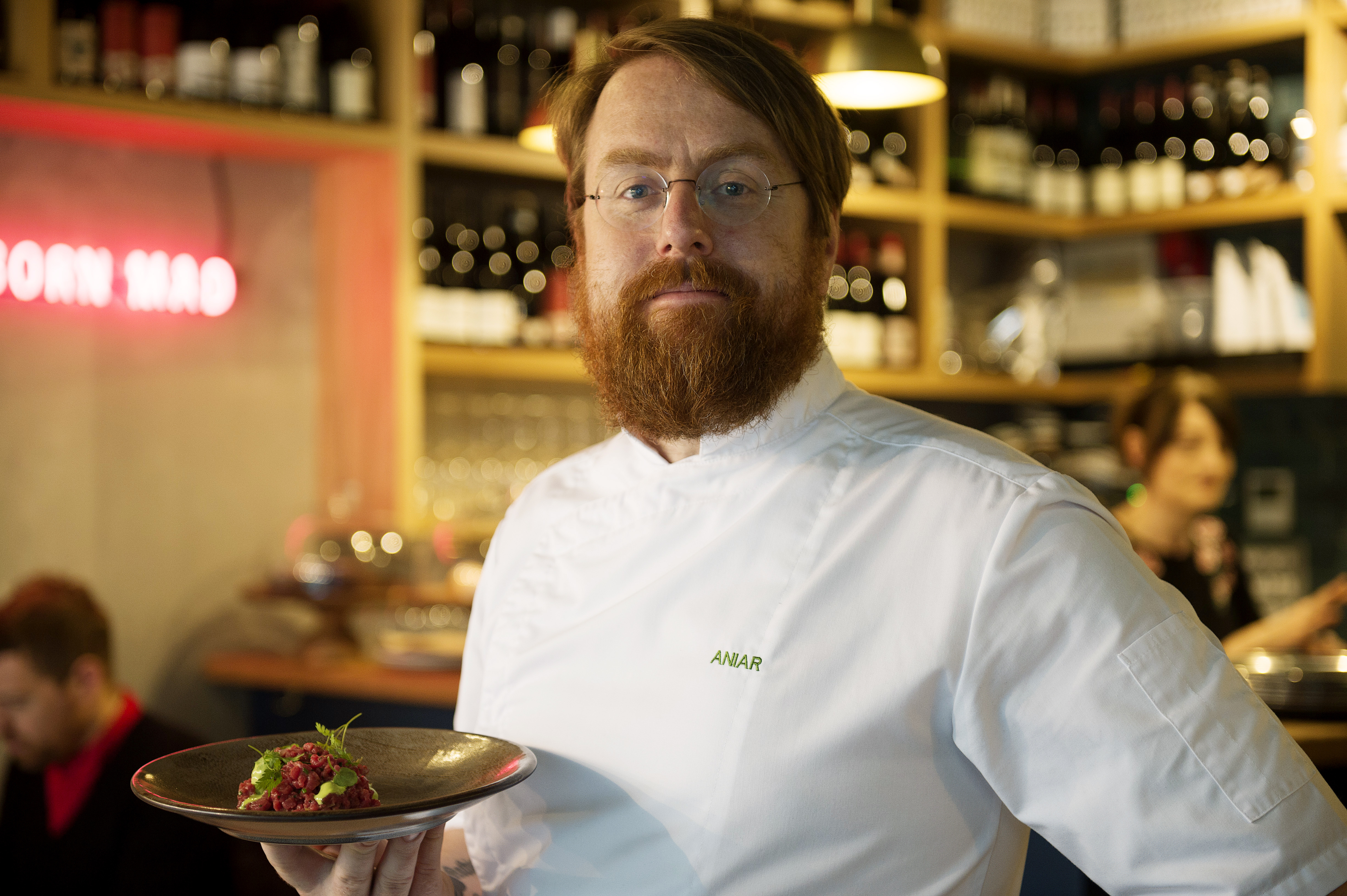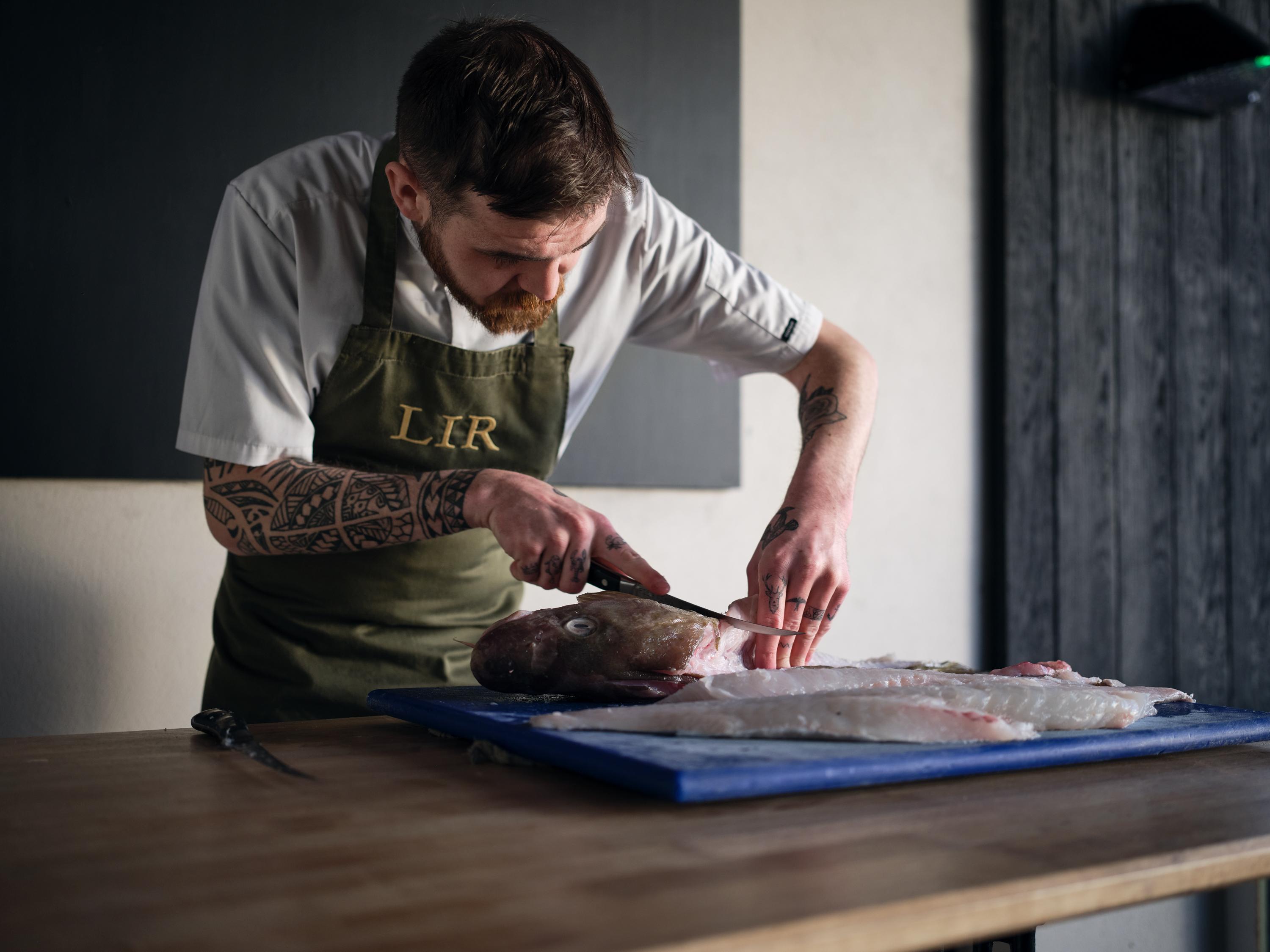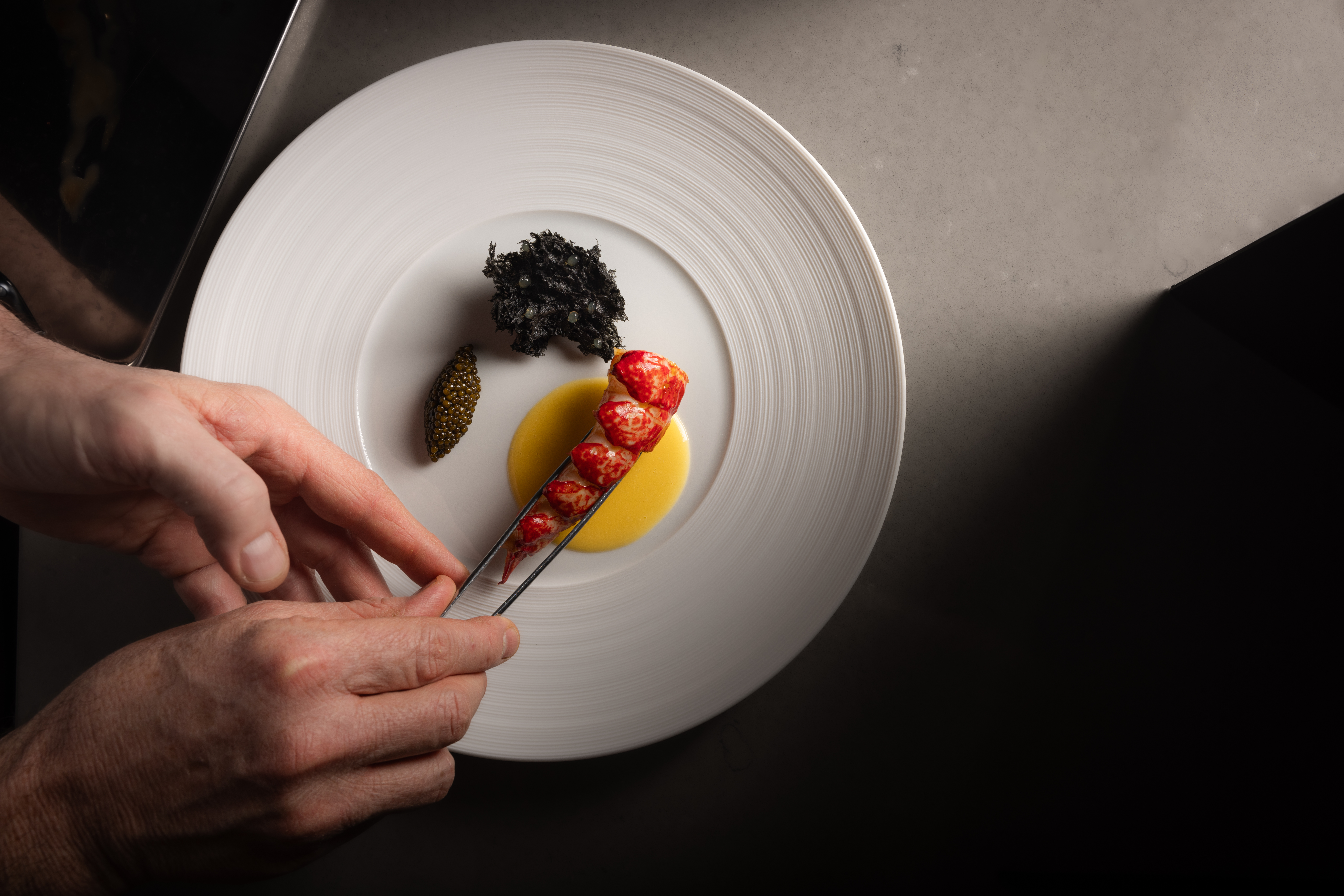Ireland on a Plate: Where Culinary Cool Meets Tradition
Mix unforgettable Michelin-starred fine dining experiences and cutting-edge homegrown chefs with the island’s famously warm hospitality, and all the ingredients are in place for a culinary destination to savour.

JP McMahon, Aniar
Place and purity. Poetry and memory. Innovation and history. Ask JP McMahon to capture the essence of modern Irish cuisine, and these are the words he conjures.
McMahon is a polymath chef, serial Galway restaurateur, prolific food writer and founder of a cookery school that promotes food as culture, ecology, science and art. At his Michelin-starred Aniar restaurant kitchen, he expresses himself not with words but dishes that are ingredient-led and terroir-driven. A poached oyster with buttermilk, wild garlic oil and sea herbs like samphire. Dashi-style seaweed broth made with foraged shore herbs and Irish kelp. Game birds with wild elderberries or rosehips preserved from autumn’s bounty.
For JP, modern Irish cuisine is “rooted in our landscape, history and produce, but it looks outward, too, to other countries discovering their own cuisine.” He sees synergies with New Nordic cuisine in its sense of place and Japanese Kaiseki cuisine in its minimalism. The Irish cuisine emerging today, however, is unique thanks to both an “intangible heritage – the layering of monastic, Gaelic, colonial and modern food histories – and the raw, unfiltered sense of landscape and weather that comes through in the food.”
A new foodie generation
Certainly, there’s something special happening in Irish food today.
First it was the Irish themselves – always well-travelled and now enthusiastic foodies – who noticed the serious quality of produce from their own green island and its cold-water shores.
Then a new generation of chefs gained confidence, techniques and knowledge through their own travels to top international kitchens and dining rooms.
Looking deeper at their gastronomic history and heritage, those chefs saw hidden riches. Discovering buried treasure is always a thrill, and that excitement is palpable in Ireland’s gastronomic scene, where today modern techniques and global influences transform traditional foods.

Stevie McCarry, Lir
Now the word is getting out; that Ireland’s natural beauty can be experienced from a plate as much as a hike, drive or boat ride. That the soul of this island of storytellers is being expressed by culinary artists and masters of hospitality. That the playfulness for which Ireland’s pubs are famed can be found in its dining rooms, too, and its creative kitchens.
Grainne O’Keeffe is chef-owner at Mae Restaurant in Dublin, where her refined yet approachable tasting menu showcases the best of Irish produce with contemporary flair.
“The level of talent [here] is incredibly high,” she says. "There’s a lot of support for creative people within the industry to open their own spaces or come up with new ventures… and it’s encouraging [us] to have fun and be original.”
Stevie McCarry from Lir seafood restaurant and fishmonger in Coleraine, County Londonderry agrees that playfulness is key. McCarry and his wife Rebekah are on a mission to reintroduce diners to the joys of local wild seafood, and to make it accessible in price and in appeal.
McCarry says he likes to innovate with lesser known local fish, “taking a playful approach to our dishes, whether it’s a ling fish kofta, smoked dogfish corn dog or a squid lasagne. We make fish that people aren't familiar with more attractive and less intimidating.”
Sourcing directly from fishing boats and other local suppliers gives their team an appreciation for the work that goes into harvesting or growing that food. “It gives us a level of respect for the produce you wouldn't get seeing a large faceless wholesaler bringing it in,” he says. “It also creates opportunity for growth. For example, being able to request monkfish livers to create a dish and then showing the fishermen that, while it’s waste for them, it’s a rare ingredient for us and could be of value.”
The foraging programme at Lir, managed by Rebekah, brings in wonderful seaweeds and herbs. “There's something beautiful about using the ingredients that grow all around us,” McCarry says, “and the education of finding where they are and what they taste like can be really great for the kitchen team to be involved in.”
A culinary haven
Learning together affords a shared sense of adventure and discovery of what the island has to offer.
Cold-water fish and seafood harvested in deep seas and shallow estuaries. Oysters that taste of sweet cucumber or savoury umami depending on the fresh river waters that wash their beds. Mussels grown on ropes pulled in a fjord’s powerful currents. Lamb that tastes of the heather-rich hills on which it roamed. Beef grazed on the greenest of pastures. Rich milk that has made the best butter for centuries, and now some of the best cheese, too, thanks to the 1970’s farmhouse cheese revival that birthed today’s diverse artisan food movement. Age-old oats that remain a daily staple and heritage grains reimagined by modern craft bakers. Fat berries, verdant hedgerow and shoreside herbs that grow wild throughout this intensely fertile island.
For the chefs “rediscovering, reinterpreting and redefining Irish food through a contemporary lens,” as McMahon puts it, that connection to the land has always been strong, handed down through the generations who have worked it.
O’Keeffe named her restaurant after her late grandmother. “Mae was such a warm-hearted person,” she says. “They lived on a little farm in Leitrim where she was from and reared bulls. They had their own well, grew their own food and she was a wonderful baker… and if I can bring even one per cent of her warmth and hospitality to what we do in the restaurant then it will shine through.”
Here in Ireland the farm-to-table movement is a return to how things were long done. Respecting seasonality and pursuing sustainability are the right ways to approach what nature offers. Likewise, says O’Keeffe, “that long-standing idea of the Irish being great at hospitality is true, it’s in our nature.”

Liath, Dublin
Taste the island
The beauty of a compact island is that you don’t have to travel far to tap into its ever-evolving and diverse food scene, with top-notch food found in cities like Dublin, Cork, Belfast and Galway and in a growing network across the land.
In Dublin, choose between two-star Michelin dining options, whether Chapter One’s pristine luxury or Liath’s creative sensory exploration – or discover exciting young talent at Comet where chef Kevin O’Donnell has returned from Denmark’s seasonally-driven Kadeau and the bucolic Le Doyenné outside Paris.
In Cork city, dine fin-to-gill at Goldie, head to east Cork's Ballymaloe House for traditional Irish food or to west Cork’s Dede for the best local produce married to a Turkish culinary heritage.
In Belfast, OX brings a sense of theatre to local seasonal produce while across in County Donegal, an 18th-century pub is the setting for modern twists on traditional flavours at The Olde Glen Bar & Restaurant.
In Galway city, a meal at the Green Michelin-starred Kai restaurant is a gastronomic hug. Alternatively, drive an hour northwest to Ballynahinch Castle in Connemara to be nourished by Danni Barry’s distinctive expression of Ireland’s natural larder, or an hour south to relish Michelin-starred fine dining in a 200-year-old cottage at Homestead Cottage in Clare.
Wherever you go on the island, there’s a warm local welcome waiting for you – and a surprising Irish gastronomic adventure.
